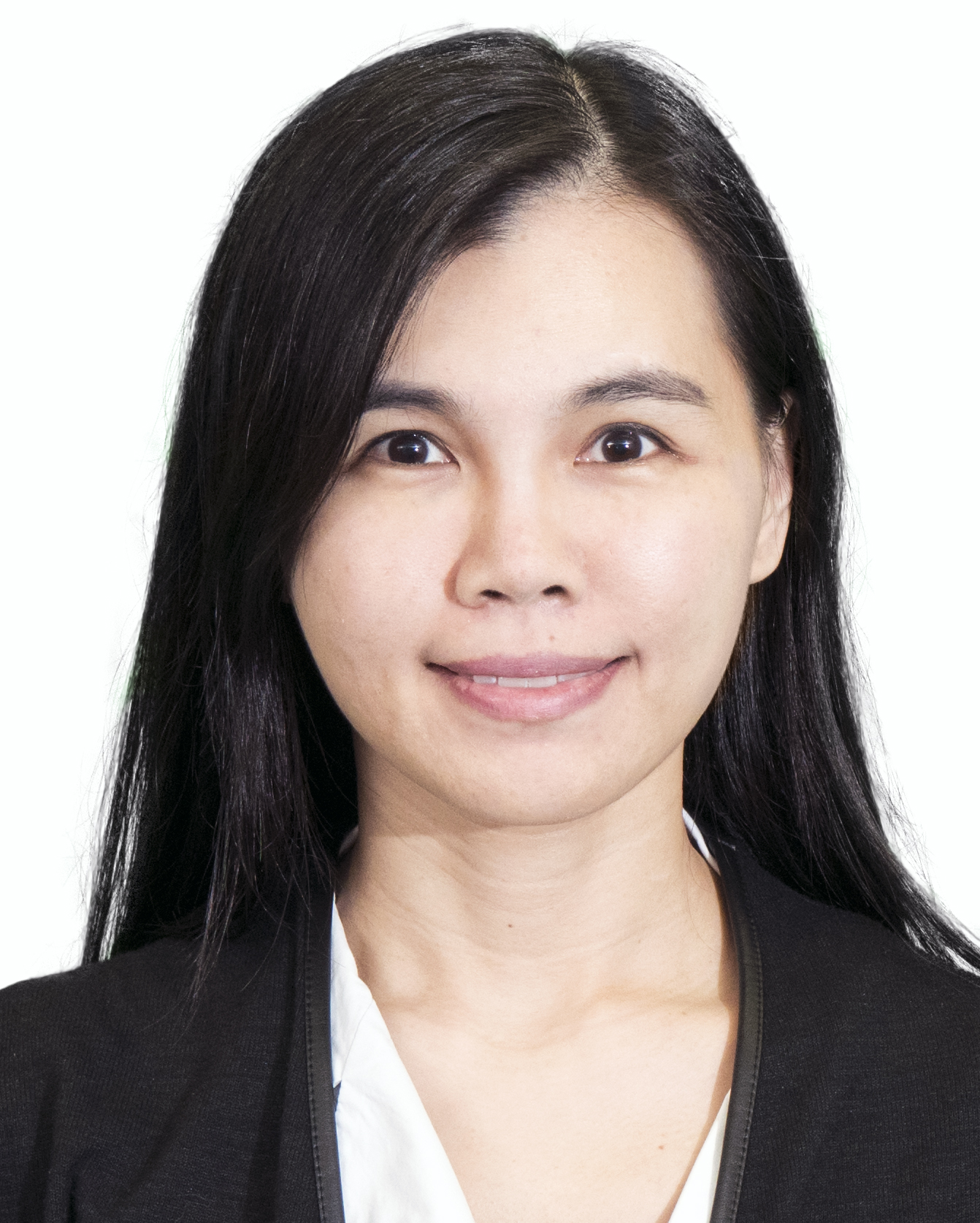Professor HAI Siu Han, Jo Jo

Clinical Assistant Professor
- MBBS (HK), MRCP (UK), FHKCP, FHKAM (Medicine)
| haishjj@hku.hk | |
| 2255-4385 | |
| HKU Scholars Hub |
Biography
Prof Hai Siu Han Jo Jo is a Clinical Assistant Professor in the Cardiology Division, Department of Medicine, Queen Mary Hospital and School of Clinical Medicine, LKS Faculty of Medicine, the University of Hong Kong. Prof Hai received her medical degree from the University of Hong Kong. She completed her training in Cardiology and Advanced Internal Medicine in the Queen Mary Hospital, and obtained her cardiac electrophysiology fellowship at Mayo Clinic, Rochester, MN, USA. She is subspecialized in arrhythmia management, in particular complex electrophysiological and ablation procedures and device implantations.
Research Profile
- Epidemiology, mechanism, and management of ventricular arrhythmias and sudden cardiac arrest
- Epidemiology, mechanism and management of atrial fibrillation
- Epidemiology, risk stratification and management of heart failure
Selected Publications
- Hai JJ and Tse HF. Patients with atrial fibrillation and diabetes: dose apixaban remain the drug of choice? European Heart Journal 2015. In press.
- Chan PH, Hai JJ, Siu CW. Response to letter regarding article, “ischemic stroke and intracranial hemorrhage with aspirin, dabigatran, and warfarin: impact of quality of anticoagulation control.” Stroke 2015 Mar;46(3):e72.
- Hai JJ, Chahal AA, Friedman PA, Vaidya VR, Syed FF, DeSimone CV, Nanda S, Brady PA, Madhavan M, Chan YM, McLeod CJ, Mulpuru S, Munger TM, Packer DL, Asirvatham SJ. Electrophysiologic Characteristics of Ventricular Arrhythmias Arising From the Aortic Mitral Continuity – Potential Roleof the Conduction System. Journal of Cardiovascular Electrophysiology 2015 Feb;26(2):158-63.
- Ho CW, Ho MH, Chan PH, Hai JJ, Cheung E, Yeung CY, Lau KK, Chan KH, Lau CP, Lip GY, Leung GK, Tse HF, Siu CW. Ischemic Stroke and Intracranial Hemorrhage with Aspirin, Dabigatran, and Warfarin: Impact of Quality of Anticoagulation Control. Stroke 2015 Jan;46(1):23-30.
- MH, Ho CW, Cheung E, Chan PH, Hai JJ, Chan KH, Chan EW, Leung GK, Tse HF, Siu CW. Continuation of Dabigatran Therapy in ‘Real-World’ Practice in Hong Kong. PLoS One 2014 Aug 1;9(8)e1021245.
- Hai JJ, Gill H, Tse HF, Kumana CR, Kwong YL, Siu CW. Torsade de Pointes during oral arsenic trioxide therapy for acute promyelocytic leukemia in a patient with heart failure. Annals of Hematology 2015 Mar’94(3):501-3.
- Ebrille E, Chandra VM, Syed FF, De Carpio Munoz F, Nanda S, Hai JJ, Cha YM, Friedman PA, Hammill SC, Munger TM, Venkatachalam KL, Packer DL, Asirvatham SJ. Distinguishing VentricularArrhythmia Originating from the Right Coronary Cusp, Peripulmonic Valve area, and the Right Ventricular Outflow Tract: Utility of Lead I. Journal of Cardiovascular Electrophysiology 2014 Apr;25(4):404-10.
- Hai JJ, Lachman N, Syed FF, DeSimone CV, Asirvatham SJ. The anatomic basis for ventricular arrhythmia in the normal heart: what the student of anatomy needs to know. Clinical Anatomy 2014 Sep;27(6):885-93.
- Hai JJ, Mulpuru SK, Williamson EE, Foley TA, Brady PA. Sinus Nodal Dysfunction After Left Atrial Flutter Ablation – A Preventable Complication. Circulation Arrhythmia and Electrophysiology 2014 Apr;7(2):360-1.
- Syed FF, Hai JJ, Lachman N, DeSimone CV, Asirvatham SJ. The Infrahisian Conduction System and Endocavitoary Cardiac Structures: Relevance for Invasive Electrophysiologist. Journal of Interventional Cardiovascular Electrophysiology 2014 Jan;39(1):45-56.
- Hai JJ, DeSimone CV, Vaidya VR, Asirvatham SJ. Endocavitary Structures in the Outflow Tract: Anatomy and Electrophysiology of the Conus Papillary Muscles. Journal of Cardiovascular Electrophysiology 2014 Jan;25(1):94-8.
- Jo Jo Hai, Tonya Albertson, Jesica Evjen, Samuel Asirvatham. Mechanisms of VentricularTachycardia – Impact for Successful Mapping and Ablation. VT Ablation: A Practical Guide. Edited by Srijoy Mahapatra, Francis E. Marchlinski, Andrea Natale, Kalyanam Shivkumar. Cardiotext, 2014.
- Jo Jo Hai, Jesica Evjen, Tonya Albertson, Samuel Asirvatham. Regional Anatomy of the Ventricles and the Great Vessels – Implications for Ventricular Tachycardia Ablation. VT Ablation: A Practical Guide. Edited by Srijoy Mahapatra, Francis E. Marchlinski, Andrea Natale, Kalyanam Shivkumar. Cardiotext, 2014.
- Hai JJ & Tse HF. Biophysical principles and properties of cryoablation. The Practice of Catheter Cryoablation for Cardiac Arrhythmias. Edited by Chan NY. Wiley-Blackwell, 2013.
- Chan RH, Chan PH, Chan KK, Lam SC, Hai JJ, Wong MK, Tam FC, Lam L, Chan CW, Lam YM, Siu DC, Tse HF, Lee SW. The CEPHEUS Pan-Asian Survey: High Low-Density Lipoprotein CholesterolGoal Attainment Rate Among Hypercholesterolemic Patients Undergoing Lipid-Lowering Treatment In a Hong Kong Regional Centre. Hong Kong Medical Journal 2012 Oct;18(5):395-406.
- Lee SW, Hai JJ, Kong SL, Lam YM, Lam S, Chan PH, Chan KW, Wong, KL, Tam CC, Chan RH. Side Differences of Carotid Intima-Media Thickness in Predicting Cardiovascular Events Among Patientswith Coronary Artery Disease. Angiology 2011 Apr;62(3):231-6.
- Lee WL, Ho HH, Chan KW, Hai SH, Sin WC, Tam CC, Lam L, Chan HW. Successful use of Endothelial Progenitor Cell Capture Stents in Two Cases of Acute Coronary Syndrome Complicated byMajor Bleeding Episodes. International Journal of Cardiology 2011 Apr 14;148(2):224-6.
- Hai JJ & Tse HF. Ventricular Tachyarrhythmias. Oxford Desk Reference: Cardiology. Edited by Hung-Fat Tse, Gregory Y.H. Lip and Andrew J. Stewart Coats. Oxford University Press, 2011.
- Hai JJ & Tse HF. Sudden Cardiac Death. Oxford Desk Reference: Cardiology. Edited by Hung-Fat Tse, Gregory Y.H. Lip and Andrew J. Stewart Coats. Oxford University Press, 2011.
- Hai JJ, Siu CW, Ho HH, Li SW, Lee S, Tse HF. Relationship between changes in heart rate recovery after cardiac rehabilitation on cardiovascular mortality in patients with myocardial infarction. Heart Rhythm 2010 Jul;7(7):929-36.
Grant Record
- Sun Chieh Yeh Heart Foundation 2015: Pre-participation Screening for Subclinical Cardiovascular Diseases for First-Time Marathon Runners in Hong Kong (Amount: HK$1,064,000)



